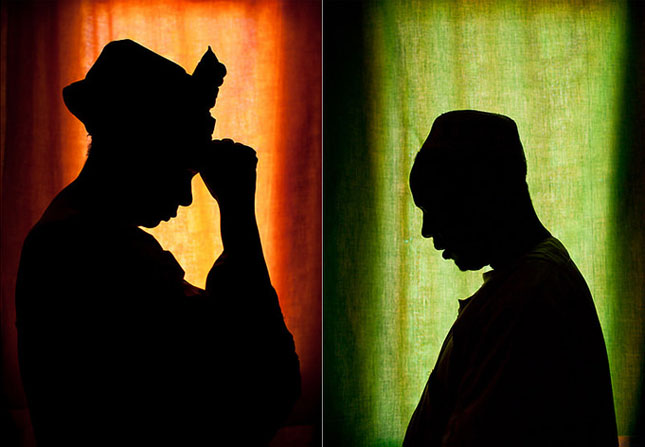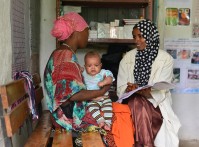-
Culture and Rights: The Struggle From Within to End Female Genital Cutting
April 25, 2016 By Anubha Bhonsle
Ashraf and Shazia use the word “guilt” often.* Their voices tremble as they rewind to the day when they read an article in an Indian magazine, Manorama, that opened their eyes to the reality of khatna – the practice of female genital mutilation among their community. “We felt guilt – immense, powerful guilt – when we realized that this was not needed, that we didn’t need to put our elder daughter through this,” the parents say. “We had no idea this was just going on, prevalent, generation after generation.”
It was too late for their first-born, but the couple decided their younger daughter, barely two years old, will not have the procedure.
The practice of female genital mutilation, sometimes called female genital cutting or FGM/C, comprises all procedures that involve partial or total removal of the external genitalia or other injury to the female genital organs for non-medical reasons. It is recognized by the United Nations as a violation of the human rights of girls and women and banned in many countries.
According to the 2016 UNICEF brief, at least 200 million girls and women alive today have undergone female genital mutilation in 30 countries, 70 million more than estimated in 2014. Available data shows the practice is highly concentrated in a swath of countries from the Atlantic coast of Africa east to Somalia, Iraq and Yemen in the Middle East, and in some Asian countries like Indonesia and parts of India. Half of the girls and women who have been cut live in three countries: Egypt, Ethiopia, or Indonesia.
The elimination of FGM is included as a target of the Sustainable Development Goals by 2030, but the complexity of the social environment in which it persists is far from being grasped.
“Look Up, There’s a Golden Bird”
India is not highlighted in the UNICEF report, but the Dawoodi Bohras, a sect of the Shia community predominantly hailing from the western states of Gujarat and Maharashtra, are known to practice FGM and have been doing so for generations.
“My mother had hers, my grandmother got hers done, and chances are her mother did as well,” Shazia remembers. “We believed it was tradition. Typically, the elder women in the family take the girl when she is about seven years old. Sometimes families go to the same cutting lady. These are old untrained midwives of sorts. They would tell the child, ‘look up, there’s a golden bird,’ and make a small cut. An ointment, or sugar, or some powder would be put to heal and you come back.”
“Less painful, less crude, more surgery-like…and therefore just fine”A small nick, a simple cut, a minor procedure; this vocabulary is gaining ground as a rationale among those who continue to stand by the practice in the face of a perceived spread of promiscuity and fracturing of traditional relationships. The medicalization of FGM has helped blunt the brutality associated with it, shifting focus from why the act is performed to making the act itself seem safer and less painful.
This is evident when I speak to Naghma from India over a Skype frame that doesn’t reveal her face. “It is not mutilation as you call it. It is not FGM like it is done in Africa, where they close holes,” she tells me. “It is done in clean places, sometimes under anesthesia and supervision. I call it a small procedure.” Once carried out by untrained midwives with blades and razors, it is now “less painful, less crude, more surgery-like, more acceptable, and therefore just fine,” even in the most educated of families. “It doesn’t hurt, no more than ear-piercing for sure,” Naghma assures me.
When pushed, she does agree, haltingly, that the procedure is ultimately aimed at keeping girls in control, at taming their desires and keeping them happy with their men. “We call it haraam ki boti,” she says, referring to the clitoris as an amorous lump of flesh. “It is just nicked and women have a better control over themselves and are satisfied.”
Cutting Day
About 5,000 miles away from Naghma, Kelechukwu Nwachukwu, an anti-FGM activist based in Abuja, has spent a lot of time resisting similar notions. “The medicalization, or if you do it with clean instruments, makes it look fine,” he says. “People used to say, ‘We didn’t do it at home.’ It was then seen as being OK.”
Nigeria took the historic step of banning FGM in 2015 but many anti-FGM advocates like Kelechukwu say the battle to end the practice is far from over. Societal norms continue to be a powerful driver. Social pressures often intertwine with other factors, like the consequences and stigma that can befall a woman if she remains uncircumcised.
“It is a means to maintain one’s relationship with a man or to make the private genitalia beautiful, healthy, clean, or to stay on with tradition and culture,” Kelechukwu says. “Since it is criminalized, the practice has gone underground and therefore carried out in dingy places with old knives that are not sanitized and used on multiple girls.”
Kelechukwu’s journey to become an FGM advocate began one afternoon in a village in Abia state. He was sitting idle with a friend and heard the cry of a young girl. It was coming from just behind the house. When Kelechukwu suggested that they go and help he was told the girl was being initiated into womanhood.
“Apparently that was a cutting day, so the practice was carried out in many homes,” he says. “It is a day of celebration, singing, dancing, and merriment – mostly all women.” Girls dress in their finery. The mothers of the girls also dress in new clothes. The girls get whatever they want to eat. “It was puzzling to me, even fascinating at first,” Kelechukwu says. “I was conditioned to see it culturally.”
But Kelechukwu was shocked when he learned what it entailed, a deep cutting of the genitalia and stitching, leaving only a small hole. He asked more questions and was told it was none of his business, but did learn many of his family members and women of the village were all survivors. “It was unimaginable,” he told me. “I could not sleep when I saw the procedure. It was devastating for me as a young man.”
An Internal Struggle
Ashraf and Shazia remember a similar feeling of disbelief and devastation when they learned more about FGM. “I see how opposite the reasons are,” Ashraf says. “When it comes to male circumcision in our community, it is to enhance sexual life, but for females we want to control or rob them of sexual pleasure.”
“It stood against everything I believed in as a woman, as a feminist”Asked whether he would now openly advocate against FGM and speak about it to members of the Bohra community, he responded in the negative. “It’s a personal decision and we see it for what it is. The majority will continue. We may speak to like-minded people but not to everyone. A big change in attitudes has to come first.”
Ashraf and Shazia’s decision is by no means a small feat. They are part of a small but strong community of Dawoodi Bohras around the world who are spreading the message in their own way.
Zehra Patwa, a 45-year-old technology project manager based in Connecticut is a survivor of FGM and part of campaign mobilizing the global Bohra community on this issue, called Speak Out on FGM. “I grew up in the United Kingdom and I have to admit I have no recollection of the procedure itself but I have vague memories of that trip to Pune [India] as a seven-year-old when this was done to me,” she says. “I felt angry and a great sense of betrayal when I heard from family members that this was done to me, that this was prevalent in my community, in my family, where everyone, a hundred percent of women have gone through this. It stood against everything I believed in as a woman, as a feminist.”
The Speak Out on FGM campaign has gained strength after a criminal case in Australia. In a landmark trial – Australia’s first criminal prosecution for FGM – a retired nurse, the mother of two girls who were cut, and a community leader were sentenced to 15 months in prison. During the course of the trial, the older girl told how she was asked to lie on a bed naked from the waist down and imagine she was a “princess in a garden” while khatna was carried out on her by the nurse who had been asked by the girl’s mother to do it. The defense argued that the nurse only touched the girls’ genitals with forceps in a symbolic gesture.
—
The question that follows any conversation around FGM is whether a law or a directive alone will be enough to end the “procedure,” as it has become known in parts of the world. After the Australia case, many Bohra leaders – from Australia and London to New York, Washington DC, Los Angeles, San Jose, Bakersfield, Orange County, and Tampa Bay – circulated letters reminding community members that khatna is illegal under many national laws and there are serious consequences to breaking those laws. But Zehra adds a note of caution, pointing out that the letters “do not actively condone it as a practice from a cultural or religious standpoint.”
“The legal standing will prevent many from seeking out this practice,” Zehra says, “however, some continue to believe that the religious and cultural support for it exists and will do what they can to continue the practice, despite its illegality.”
In India, there is no ban on FGM, and even as Bohra leaders in the United States, United Kingdom, and Australia ask community members to follow the law of the land, the Syedna, the religious head of the sect based in Mumbai, has remained silent.
The social barriers facing those in the Dawoodi Bohra community and others in West Africa working to eradicate FGM are significant and require more than advocacy about good health and reproductive rights. They reveal a veil of silence surrounding the practice that is tied to tradition, culture, and gender roles. For any law against female genital cutting to be truly effective, community engagement – dialogue, education, the support of men like Ashraf and Kelechukwu – is imperative as well.
* Some names have been changed.
Anubha Bhonsle is an executive editor at CNN-IBN, India, and a 2016 Hubert H. Humphrey/Fulbright Fellow. She reports on conflict, gender, and development.
Sources: ABC, Anjuman-e-Badri New York, The Guardian, Manorama, UNICEF.
Photo Credit: “From Shadow Into Light,” courtesy of Vincent Tremeau/Oxfam.
Topics: Africa, Asia, Australia, community-based, Dot-Mom, education, Egypt, Ethiopia, featured, GBV, gender, global health, Guest Contributor, human rights, India, Indonesia, Middle East, SDGs, South Asia, U.S., UK
 A Publication of the Stimson Center.
A Publication of the Stimson Center.






